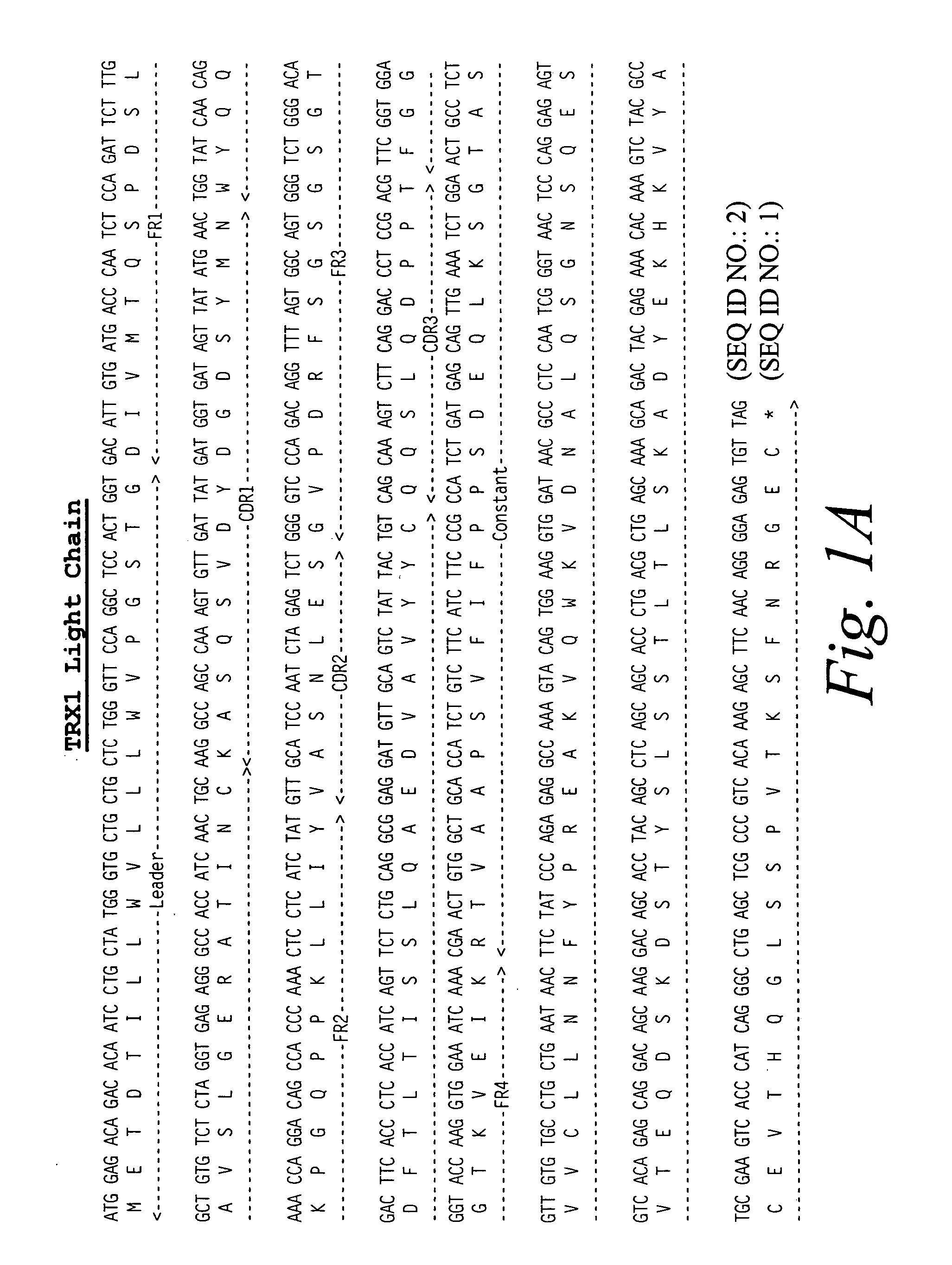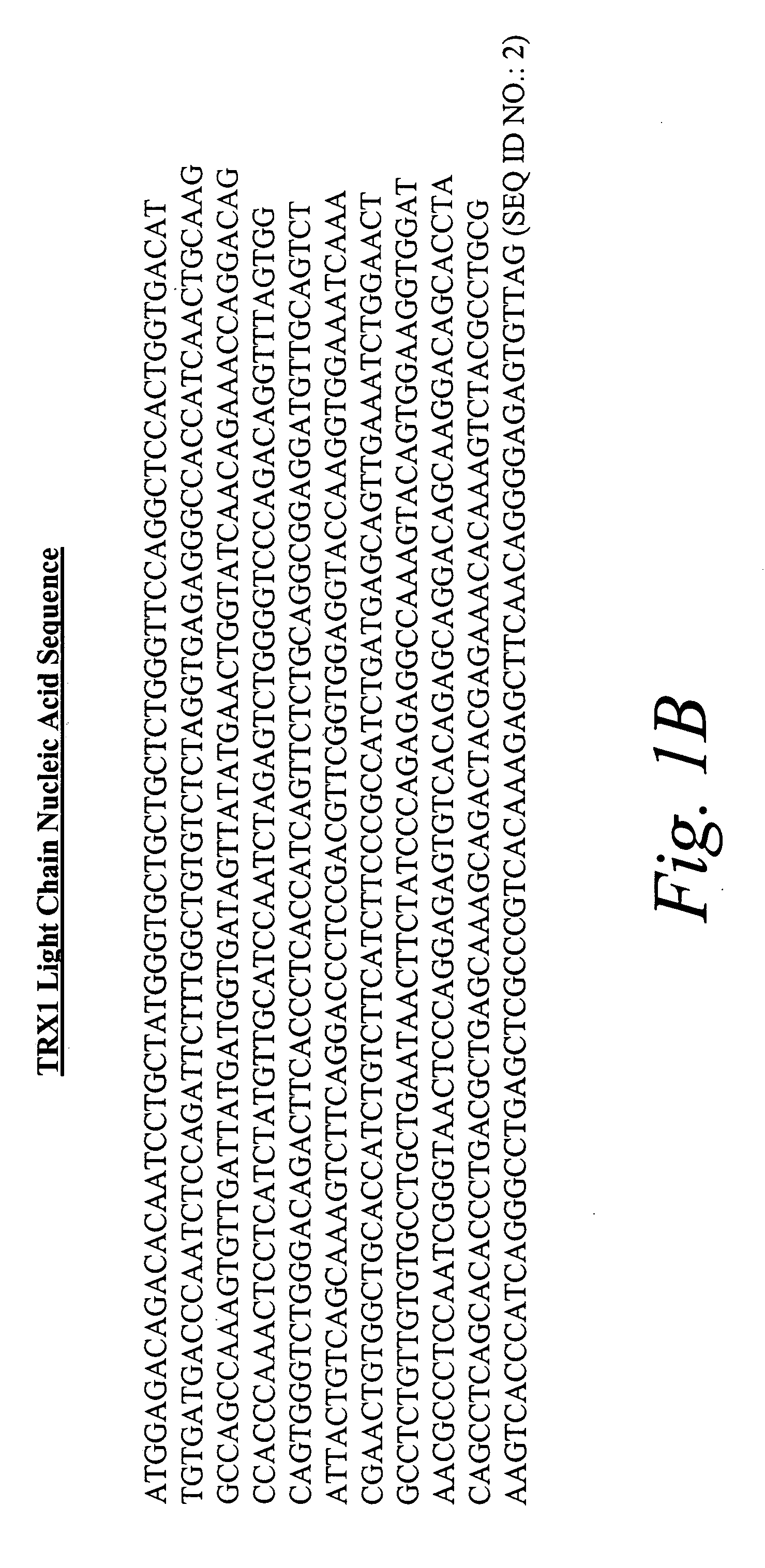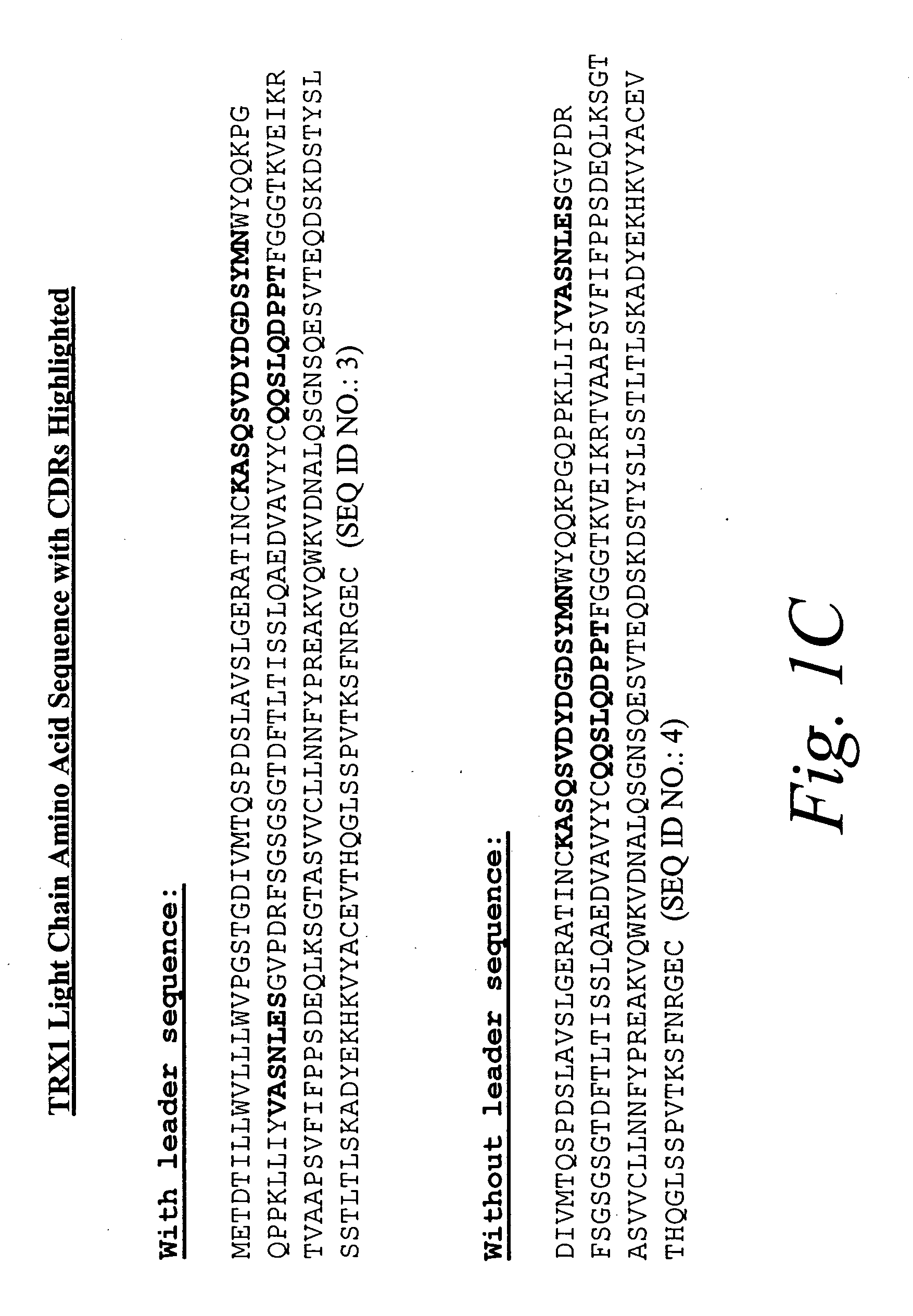Optimized dosing with anti-CD4 antibodies for tolerance induction in primates
a technology of anti-cd4 antibodies and primate tolerance, applied in antibody medical ingredients, immunological disorders, drug compositions, etc., can solve the problems of ineffective treatment, increased risk of infection, cancer and drug toxicity, and only preventing rejection, so as to induce tolerance against at least one antigen, promote tolerance, and reduce immune responses to foreign proteins
- Summary
- Abstract
- Description
- Claims
- Application Information
AI Technical Summary
Benefits of technology
Problems solved by technology
Method used
Image
Examples
example 1
Construction of TRX1 Antibody Starting from Amino Acid Sequence
[0127] A cDNA library was constructed from the mouse hybridoma NSM 4.7.2.4 using the Superscript plasmid system (Gibco / BRL, cat. no. 82485A) according to the manufacturer's suggested protocol. Heavy and light chain cDNAs were cloned from the library by DNA hybridization using as probes rat heavy and light chain gene cDNAs from the rat hybridoma YTS 177.
[0128] The rat heavy and light chain gene cDNAs of YTS 177 were isolated from the expression vector pHA Pr-1 as BamH1 / Sal 1 fragments and labeled with 32P and used independently to screen the NSM 4.7.2.4. cDNA library using standard molecular biology techniques (Sambrook, et al., Molecular Cloning, A. Laboratory Manual, 3rd edition, Cold Spring Harbor Laboratory Press, Cold Spring Harbor, N.Y. (2001); Ausubel, et al., Current Protocols in Molecular Biology, John Wiley & Sons, New York (2001).) Sequence analysis of the cDNAs derived from the NSM 4.7.2.4 cDNA library confi...
example 2
Construction of TRX1 Antibody Starting from Nucleotide Sequence
[0190] Cloning of Human Constant Regions
[0191] Heavy Chain Constant Region
[0192] The human gamma 1 heavy chain constant region (IgG1) is amplified from human leukocyte cDNA (QUICK-Clone™ cDNA Cat. No. 7182-1, Clontech) using the following primer set and cloned into pCR-Script (Stratagene). The plasmid containing the human gamma 1 heavy chain constant region in pCR-Script is designated pHCγ-1.
primer hcγ-1 (SEQ ID No.51) Spe I5′ primer: 5′- ACT AGT CAC AGT CTC CTC AGCprimer hcγ-2(SEQ ID No.52) EcoR I3′ primer: 5′- GAA TTC ATT TAC CCG GAG ACA G
[0193] Non-Fc binding mutations (Leu236 Ala, Gly38 Ala) are made in the heavy chain constant region by site-directed mutagenesis using the following primer and the Transformer™ Site-Directed Mutagenesis Kit from Clontech (Cat. No. K1600-1). The plasmid containing the human gamma 1 heavy chain non-Fc binding mutant constant region in pCR-Script is d...
example 3
Construction of Aglycosylated TRX1 Antibody
[0207] A humanized antibody, e.g., the components of the humanized antibody, e.g., light chain and heavy chain, each containing constant regions and variable regions, e.g., amino acid sequences are shown in Seq ID Nos.: 9, 11, 12, 13, 15, and 16 (FIGS. 2A, 2C, 2D, 2E, and 2G), and were produced by a procedure similar to that of Example 1. The humanized antibody is an aglycosylated antibody.
PUM
| Property | Measurement | Unit |
|---|---|---|
| Fraction | aaaaa | aaaaa |
| Time | aaaaa | aaaaa |
| Time | aaaaa | aaaaa |
Abstract
Description
Claims
Application Information
 Login to View More
Login to View More - R&D
- Intellectual Property
- Life Sciences
- Materials
- Tech Scout
- Unparalleled Data Quality
- Higher Quality Content
- 60% Fewer Hallucinations
Browse by: Latest US Patents, China's latest patents, Technical Efficacy Thesaurus, Application Domain, Technology Topic, Popular Technical Reports.
© 2025 PatSnap. All rights reserved.Legal|Privacy policy|Modern Slavery Act Transparency Statement|Sitemap|About US| Contact US: help@patsnap.com



